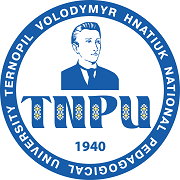THE DUALITY OF ALLUSIONS IN DAN BROWN’S THE LOST SYMBOL
DOI:
https://doi.org/10.32782/2307-1222.2025-59-29Keywords:
allusiveness, intertextuality, postmodernism, semantic analysis, American literatureAbstract
The article analyses allusions in the novel The Lost Symbol by the contemporary American writer Dan Brown from the point of view of the duality of this phenomenon, which forms ambiguity by expanding and enriching textual information. The relevance of the study is due to the fact that allusiveness is one of the characteristic features of the writer’s novels. At the present stage, the availability of a number of works related to the study of allusion as a stylistic device, their classification and structure provide a basis for analysing the phenomenon of allusiveness in samples of contemporary literary works that have been little studied. In this way, the potential of scientific research based on the novel The Lost Symbol is determined. Among recent studies, there are also those that analyse the structure and describe the semantic and structural relations of elements of allusions, allusive references and hints. The article outlines the theoretical foundations of the analysis of allusions by two elements that constitute the semantic unity and determine the semantic and subtextual character of allusions: denotations (texts, phenomena, events, names and titles to which the reference is made) and representatives (the way the allusion is presented in the text). In turn, the denotations were classified according to the characteristics of intertextuality and non-intertextuality, the presence or absence of a connection with written discourse activity. The analysis is based on the identified examples of allusions in the novel’s text. The article describes what basic and additional information is included in allusive references, what elements serve as allusive markers and the actual ways of expressing allusions. The study of allusions in this way demonstrates the process of their recognition by the reader, decoding and establishing a logical correspondence between allusive units and hidden meaning. In the end, it is confirmed that the duality of allusions in the novel The Lost Symbol is a means of semantic expansion, which is achieved by the unity of denotations and representatives. On the basis of the comparative results of the study, the article outlines the prospects for further research related to the systematic analysis of the duality of allusions, the use of comparativistics and further systematisation of the developments.
References
Кузнєцова Г. Алюзія як лінгвістичне явище. Науковий вісник Міжнародного гуманітарного університету. Серія : Філологія, 2014. Вип. 9. С. 89–91. URL: http://www.vestnik-philology.mgu.od.ua/archive/v9/Filologi9.pdf#page=89.
Лавриненко О. Комунікативно-прагматичний потенціал алюзії в англійському та українському публіцистичному дискурсі : дис. … канд. філ. наук : 10.02.17. Київ, 2009. 234 с.
Підгорна А. Інтертекстуальність роману Д. Брауна «Інферно». Вчені записки ТНУ імені В.І. Вернадського. Серія : Філологія. Журналістика, 2022. Т. 33 (72). № 6. Ч. 1. С. 128–132. DOI: 10.32782/2710-4656/2022.6.1/22.
Святовець В. Словник тропів і стилістичних фігур. Київ : Академія, 2011. 176 с.
Brown D. The Lost Symbol. London : Corgi Books, 2010. 671 p.
Lennon P. Allusions in the Press. An Applied Linguistic Study. Berlin & New York : Mouton de Gruyter, 2004. 297 p.










